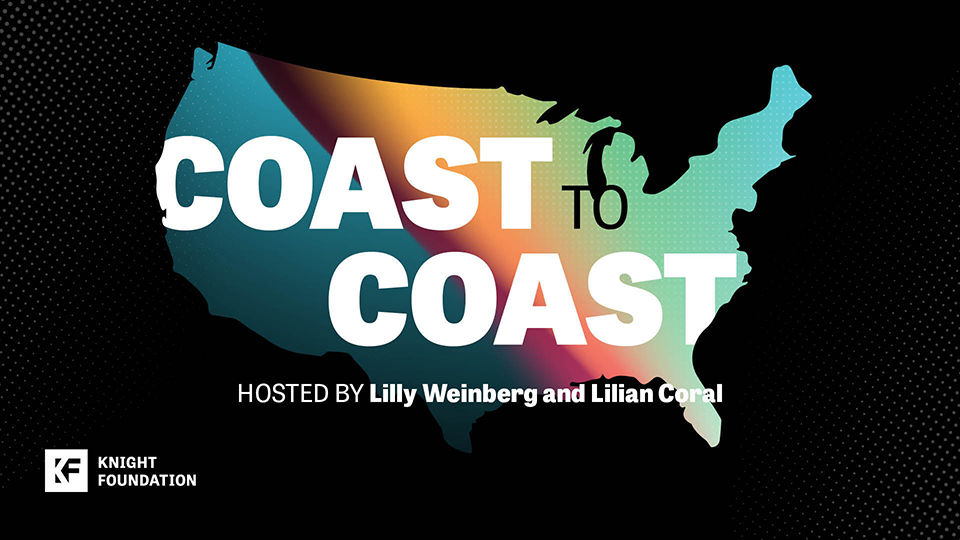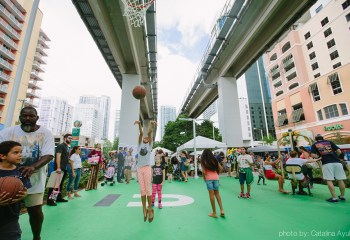Two reports, “Measuring Progress Toward Downtown Revitalization and Engaging Public Spaces: A review of existing research,” and “Toolkit: How to measure progress toward downtown revitalization and engaging public spaces,” examine how to practically address important questions around downtown revitalization and engaging public spaces, from a comprehensive review of existing literature to a toolkit with takeaways to implement in communities.
AS COMMUNITIES ACROSS THE COUNTRY WORK TO REVITALIZE DOWNTOWNS AND NEIGHBORHOODS, WHICH METRICS INDICATE PROGRESS OR SUCCESS?
Knight commissioned Community Science to review existing research on downtown revitalization, equitable economic development and public space activation to investigate this question. While this work was commissioned before the COVID-19 pandemic and before the reenergized dialogue about addressing racial inequities in the United States, the question is vital as cities reopen and recover as vibrant, equitable hubs of social, economic and civic life. City leaders across the nation are simultaneously confronting two questions: how to recover and how to do so equitably. This report shares learnings about ways to measure success in both of those aims.
EXECUTIVE SUMMARY
To enhance efforts to revitalize downtowns and neighborhoods, Knight wanted a clearer under- standing about how best to assess the impact of these investments. That is, which metrics, according to experts, indicate that work to revitalize downtowns and communities is taking hold? These questions were raised before the COVID-19 pandemic occurred and before the current reenergized dialogue about addressing racial inequities in the United States began. They are now more vital than ever as cities begin to reopen and recover as vibrant, equitable hubs of social, economic and civic life.
Knight commissioned Community Science to conduct a review of existing research on downtown revitalization, equitable economic development and public space activation to investigate these questions. The purpose of this report is to share learnings about what to measure in order to support similar efforts, post-COVID-19 recovery and steps to eliminate racial inequities in United States cities.
The following conclusions emerged from the review of the literature. The first two synthesize strategies that cities commonly use to foster revitalization. The remaining four are what the literature tells us about how to measure these strategies.
- Seven well-known strategies emerged from past research as key drivers of revitalization. These strategies include creating and sustaining a busi- ness improvement district, promoting downtown through branding and marketing efforts, investing in a diversity of mixed-use developments, attracting and keeping businesses downtown, expanding employ- ment opportunities in the downtown or city center, creating and activating public spaces and imple- menting tax or other fiscal incentives.
- Many cities build and program public and civic spaces as a revitalization strategy, seeking to increase resident and visitor attachment to these places. Research suggests that the basic qualities that make a good place can be captured using four concepts: multifunctional spaces used every day of the week, inclusive and safe gathering spaces, attractive and comfortable places, and proximity to nature. For spaces to feel inclusive for all races, their design, including perceived safety features such as police presence and other surveillance, need to be carefully considered and balanced. These public spaces can then create a sense of place and place attachment among residents, who are motivated to protect, improve and take care of the broader place in which they live.
- Movement of people seems to matter (as residents, employees and visitors). One measure of successful revitalization includes measuring the flow of people in and around key focus areas. Post COVID-19, understanding how movement across a community is changing will be even more critical as cities work toward recovery—even if residents’ preference for density decreases.
- “Revitalization” should be measured comprehensively, looking at trends in employment, poverty, demographics, cost of doing business, the resident experience, the health of the business and housing markets, and with an eye toward whether benefits are distributed equitably. Interim progress measures should reflect a city’s unique strategies and desired short-term goals. They should also assess equitable access to the benefits of revitalization to help prevent displacement of longtime residents and businesses.
- Assessing civic space quality and a city’s progress toward activating those spaces is best measured with multiple indicators. Those include diversity of users, potential for interacting with the space and with others, design features that support user safety and comfort, users’ immediate perceptions of the space, the presence and strength of cultural assets in or near the space, the diversity of the surrounding business mix and how often the space is used.
- Individuals’ attachment to public or civic spaces is a critical step toward revitalization; people must want to be in and draw benefit from being in an area for revitalization to occur. Measuring progress toward increased place attachment, therefore, must be measured at tangible and psychological levels. Tangible evidence of place attachment include employment, property ownership and resident family members. Psychological indicators of attachment are positive memories and emotions, sense of belonging, positive self-esteem and positive health and well-being.
These findings are based on U.S. cities’ experiences over the last 20 to 30 years.A Under normal circumstances, these experiences would serve as a valuable guide for future revitalization work. The advent of the COVID-19 pandemic, though, makes these insights even more important. It is not yet clear how social distancing and mandatory closures will affect downtowns over the long term (e.g., will residents be afraid to travel to or live downtown? Will businesses lease less office space and allow their workers to work remotely? Will public events be possible, and if not, will businesses that rely on their foot traffic leave the downtown area?). Nonetheless, it is clear that this is
a moment for city leaders to take stock and prioritize recovery and revitalization strategies for the future. It is also the time to decide how these strategies will seek to address racial inequities in American cities.
There is value in looking to the past and adapting those lessons to the current reality. For example, knowing that people who feel connected to a place and to each other are more likely to stay and invest can inspire innovative strategies for fostering connections even within the constraints of COVID-19. Similarly, cities may prioritize supporting the recovery of their small independent retailers given their importance in creating vibrancy and drawing visitors and residents to the area. They may also seek to invest in small businesses owned by people of color to ensure they have the resources to thrive and support the communities in which they are located. The outcome measures highlighted in this report will continue to be relevant, though adaptations may be needed at times. For example, it will still be important to measure the quality of a public space but specific questions related to safety and comfort may need to be adapted to reflect social distancing.
Cities have been at the center of public health crises in the past and have found ways to adjust and thrive once more. With strategic and coordinated action by business and government leaders, this can again be possible. As leading global experts recently explained, “if the world’s cities find ways to adjust, as they always have in the past, their greatest era may yet lie before them.” With city leaders focused on addressing racial inequities, there is hope that this great era will include pathways for access and prosperity for all residents.



